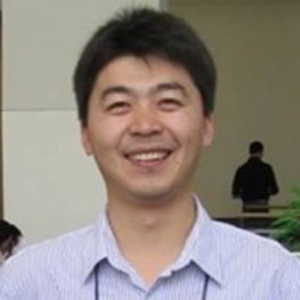Program Information
Development of Automatic Segmentation Algorithm to Assess Parotid-Gland Volume Changes Following Radiotherapy for Head-And-Neck Malignancies: A Longitudinal Study
X Yang1*, G Cheng2, N Wu3, W Curran4, T Liu5, (1) Emory University, Atlanta, GA, (2) China-Japan Union Hospital of Jilin University, Chuangchun, Jilin, (3) China-Japan Union Hospital of Jilin University, Changchun, Jilin, (4) Emory University, Atlanta, GA, (5) Emory Univ, Atlanta, GA
WE-C-116-4 Wednesday 10:30AM - 12:30PM Room: 116Purpose: Xerostomia (dry mouth), secondary to radiation-induced parotid-gland injury, is a distressing side effect affecting up to 90% of patients following head-and-neck cancer radiotherapy (RT). Recent MRI studies have demonstrated that the volume reduction of parotid glands is an important indicator for radiation damage and xerostomia. This study's purpose is to develop an automated MR parotid-gland segmentation method to monitor parotid-gland volume change induced by radiation.
Methods: We conducted a longitudinal study of 15 patients (54 MRIs). All patients received 1 MR scan prior to RT, and additional 1-4 MR scans post RT (follow-up: 6-24 months). The proposed method combines atlas registration which captures global variation of anatomy with pattern recognition which captures local statistical features to segment parotid glands from head-and-neck MRI. Specifically, the segmentation method includes 3 steps. First, we built an atlas (pre-RT MRI and corresponding parotid-gland mask contoured by physician). We utilized a hybrid deformable image registration to map the pre-RT MRI to the post-RT MRI, and applied the transformation to the parotid glands segmented from the pre-RT MRI. Second, the kernel support vector machine (SVM) was trained with pre-RT MRI, multi-features (Gradient, Sobel, and Gabor features), as well as the transformed parotid mask. Lastly, the trained KSVM was used to segment the post-RT parotid glands. The resulting segmentations were compared with physicians' manual contours.
Results: The average left and right parotid-gland volume overlapped 91.1±1.6% and 90.5±2.4% between the automatic segmentations and the physicians' contours. Overall, the parotid-gland volume reduction was observed in 12 patients, and the volume reduction was 12.6-17.8% for 5 patients at 1-year follow-up.
Conclusion: We have demonstrated the feasibility and accuracy of our automatic segmentation algorithm for monitoring radiation-induced parotid-gland volume changes. This segmentation method may be useful as we try to address xerostomia in patients following radiotherapy for head-and-neck malignancies.
Contact Email:


